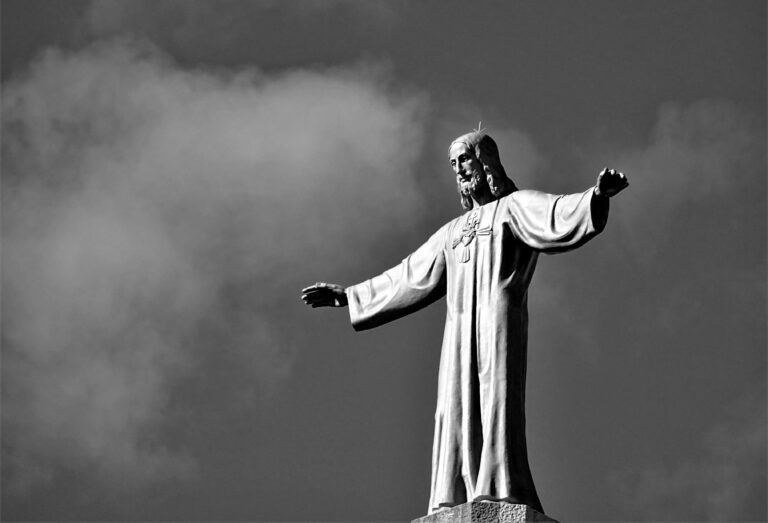Dearly beloved in the Lord, today is forty days since we celebrated the birth of Jesus, and the Holy Mother Church celebrates the feast of the Presentation of the Lord.
What is the Presentation about?
According to Jewish custom (Leviticus 12:3-8; Exodus 13:2, 12, 15), forty days after the birth of a male child, eighty days in the case of a female child, the mother comes to the temple for the rite of purification.
If the child is the firstborn son, he is presented to the Lord for service as a priest. After saving the firstborn of the Israelites from death in Egypt, God demanded that every firstborn Hebrew male child should be dedicated to Him as a priest. It is called the priesthood of the firstborn.
However, when God set aside the tribe of Levi, establishing the priesthood of the sons of Aaron, this tradition continued, but in this case, the firstborn is redeemed from this obligation; the family pay five shekels to the priestly family (Numbers 18:13-18).
The law prescribes a sacrifice of a lamb for a burnt offering and a pair of turtledoves or two pigeons for a sin offering. However, if the family cannot afford a lamb, they can offer two turtle doves or two young pigeons (Leviticus 12:6,8), as was the case with the parents of Jesus.
Today’s feast is also called Candlemas or ‘Hypapante’ (Ὑπαπαντή), meaning ‘meeting’ in Greek. This is to emphasise the meeting between Jesus and Simeon, who had waited all his life for the coming of Jesus, who is the hope and glory of Israel and the light to enlighten the Gentiles.
It is not so hard to identify and appreciate the mystery and paradoxes at play in the Presentation of Jesus.
Mystery and paradox
The parents of Jesus were not rich enough to afford the prescribed Lamb according to Leviticus 12:1-8, especially verse 8, so they brought a pair of turtledoves.
However, they offered the best lamb to God because the child they brought was the Lamb of God Himself, the Lamb that God Himself approves and supplies.
They brought Jesus to the temple to be consecrated, but He is the Temple of God whose presence consecrated the Jewish Temple.
Mary came to the temple to be purified, but she did not need any purification. She conceived her child in a sinless womb, and she was preserved from all stains of sin and defilement. She was a virgin before, during and after giving birth to Jesus.
In appearance, Simeon held Him in his hands but in reality, He holds Simeon, you and I and the whole world in His arms.
The Presentation calls to mind the deliverance of the firstborn from death in Egypt, but in the case of Jesus, He is the firstborn who came to die so that death can pass over us. So He wasn’t presented as someone saved from death; He came as the firstborn whose death will save us.
Jesus didn’t need redemption from the obligation of the priesthood because He is our Eternal High Priest who seeks no redemption from this ministry.
In appearance, Jesus was presented to the Father but in reality, He has been with the Father for all eternity. So, it was not Jesus who was being presented but in His humanity, He took our place and presented us to the Father. In Him, all of us have been presented/dedicated to God; we belong to God.
We have so much we could reflect on from today’s feast. However, I just want to focus on Simeon, the parents of Jesus and reflect on our presentation.
I. Simeon was described as;
A. A righteous and devout man: Righteousness indicates that he tried to be pleasing to God by keeping God’s commandments and being fair to others. Devout means that he was committed to worship, prayers and the service of God.
B. He waited for the consolation of Israel:
He lived each day in the hope of the fulfilment of God’s promise to him that he would see Jesus (the promised Messiah) before death.
C. The Holy Spirit was upon him:
He was under the influence of the Holy Spirit, empowered, guided and enlightened by the Holy Spirit.
We can learn from his example to seek to be righteous and devout, to live each day trusting that God will fulfil His promises to us, to live each day in anticipation of the return of the Lord and to be under the power and influence of the Holy Spirit.
II. The Parents of Jesus.
The text shows us that the parents of Jesus were faithful observers of the law.
How faithfully do we obey God’s Commandments and the precepts of the Church?
For instance do we obey the commandment to keep the day of the Lord holy by going to Mass, spending time in prayer and resting from servile works, and the commandment to make good confessions?
Do we obey the precepts of the Church on marriage and family life?
What is the place of God and faith in our family life?
Is our house a domestic Church, or is there no room for Him in our inns?
III. Our presentation
Finally, in Christ, we have all been presented to the Lord. Our Baptism celebrates this reality. Let us keep in mind that we do not belong to ourselves but to the Lord. We read in 2 Corinthians 5:15 and Romans 14:8 that we must no longer live for ourselves alone but for the Lord. Perhaps we could say to the Lord today, “All I have is yours; yours I am, yours I want to be; you may do with me whatever you will.”
Sermon preached by Fr Emmanuel Baraka-Gukena Okami on February 2, 2025
Note.
Today is also the world day of consecrated life established by Pope John Paul II. Our love and prayers are to all men and women who have consecrated themselves to serve God in poverty, chastity, obedience and prayer.


